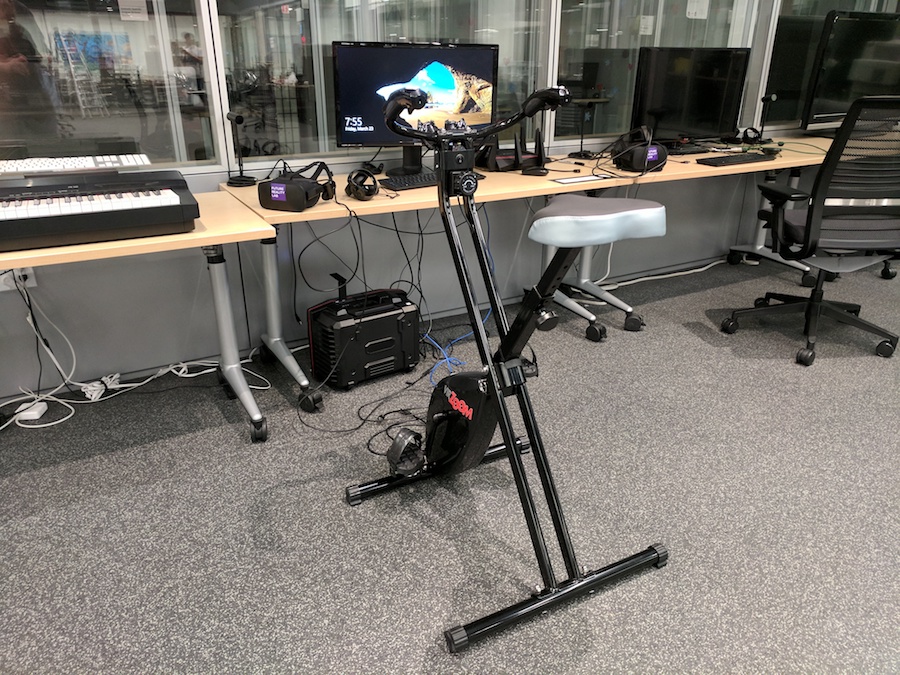I bought a VirZOOM VR exercise bicycle for the lab — just ordered it on Amazon and it arrived two days later. You ride it like any exercise bike, but it also functions as a VR game controller.
It works just fine with Vive or Oculus or pretty much any VR system, since to your computer’s software it just looks like a game controller. Here it is, in its new place in our Future Reality Lab.

The bike was easy to set up, right out of the box. Everybody in the lab wanted a turn, and all agreed that the experience was great.
Interestingly, everyone who tried it worked up a sweat without even noticing. It’s so much fun that you don’t quite realize you are getting aerobic exercise.
Such a device raises interesting questions. It could be seen as part of a dystopian trend: one more step away from a true experience of reality, à la Ready Player One.
After all, why are you riding your bike around in a virtual world when you could be riding a bike in the real world? Isn’t this just one more step in our technologically enabled retreat from reality?
Or this device could be seen as something positive: a more healthy and body-friendly way to experience immersive entertainment. I favor the latter interpretation, for the following reason.
If movies or theater or reading books were new and unfamiliar, someone could easily argue that they are insidiously removing us from the real world. When you watch a movie or a play, or when you read a book, your true reality is being replace by a fake one.
Yet people generally don’t make that argument these days. The reason is that we now understand the cultural utility of books and theater and cinema. Through these media we do not really abandon our reality, but rather broaden it through temporary immersion in other worlds — worlds that at their best are created by great storytellers.
Imagine if you could have all those cultural benefits while getting in your 30 minutes a day of aerobic workout. To me that sounds like a pretty sweet deal.
